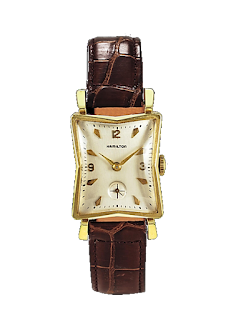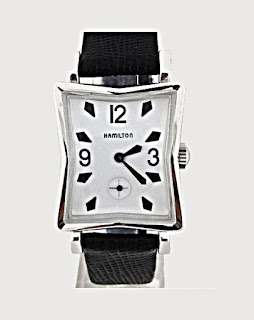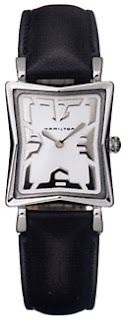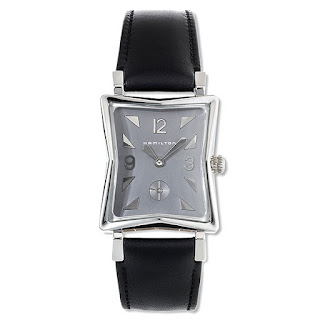Hamilton Watch Company released the first Chatham model in 1953. The designers put it in a 14kt gold case. They attempted to create an Art Deco throw back model consistent with the mid-century trend to recreate pre-war (WWII) 1938-1939 designs. Hamilton launched several designs, they showcased for the 1939 New York World’s Fair.
The Chatham became part of a relaunch of the classic line in 1989. Why a relaunch? Let’s step back.
In 1982, Hamilton realized a potential existed in “classic” watch design. Prior trials of reissued watches, especially the 992 Railroad watch flopped. The Boulton wristwatch, however, had brisk sales, in fact, they sold out completely and management believed they could have sold more.
At that time, Hamilton used one main distribution model for the Boulton. They sold 2032 watches by mail, direct from Hamilton newspaper and magazine ads. They also offered a small quantity to Nieman-Marcus and Bloomingdale’s. Both shipments sold out quickly.
As suspected, the potential management thought existed had teeth. Hamilton, however, did not have the marketing or production facilities take advantage of the trend toward retro designs. Additionally, ownership had problems of their own. Hamilton became a part of the largest merger in Swiss industry history. The merger
Hamilton only had one classic watch design, the Boulton, to offer better stores using the “classic” them. The effort to take advantage of a new trend in watchmaking fizzled out. Hamilton didn’t have a “classic” line. They didn’t even have diagrams, production facilities or suppliers.
Hamilton acquired the services of Hans Scholl from Omega. Hans selected a number of designs from the company vault, old catalogs and collectors items. The top picks included the Piping Rock, Cabot, Emerson and Wilshire.
Hamilton, continued to face the problem of production. For example, the only original Piping Rock Hans could find existed at the Baseball Hall of Fame – the 1928 Yankee on display. The company borrowed it, made drawings to exact specifications.
Under Scholl’s direction, Hamilton recreated the Piping Rock, Cabot, Emerson and the Wilshire. Hamilton considered the 1982 Boulton as part of the original five, though the later models arrived six years later. Hamilton called these, the Original Classics. Scholl had to import cases and movements from Switzerland, but he stayed true to the original designs, which were exact replicas in appearance.
Shortly after the release of the Original Classics, Scholl’s team released the Ardmore, Benton, Carlisle, Contour and Ventura. Hamilton referred to these as Traditional Classics as they differed from the “originals” in some ways to accommodate available supplies of cases, movements and bands.
Hamilton created their next series (of which the Chatham belongs) called the American Classic Collection. These watches have similarities to original models, but the overall designs changed in keeping with the downturn in demand for vintage watches and the upturn in fashion.
You can see the difference in the progression of the versions of the Chatham below.
|
|
||||
|
|
||||
The specifications of the American Classics
Quartz movement
-Dial color: gray
-Display: 2 needle
-Material: stainless steel case (mirror finish)
-Mineral glass crystal
-Size: approx.
-Water resistant: 50 m
-Belt material: calf, color: black
-Weight: approx. 38 g
-Mounting width: 16 mm / s clock side fixture side 16 mm
-D buckle
-Maximum arm around: 19.5 cm
The following photos come from my collection. Notice that this watch has a back secured by screws. Previous versions used snap backs.
In a way, the “classic” Hamilton watches saved the company. Without a new strategy, Hamilton headed for failure. Unable to make a profit against the
The classics allowed Hamilton’s profitable Awards & Incentives and their military line, Khaki, programs to continue. Without the boost from the classics, the company just didn’t have a wide enough product line.
Copyright 2006-2017 | All Rights Reserved




